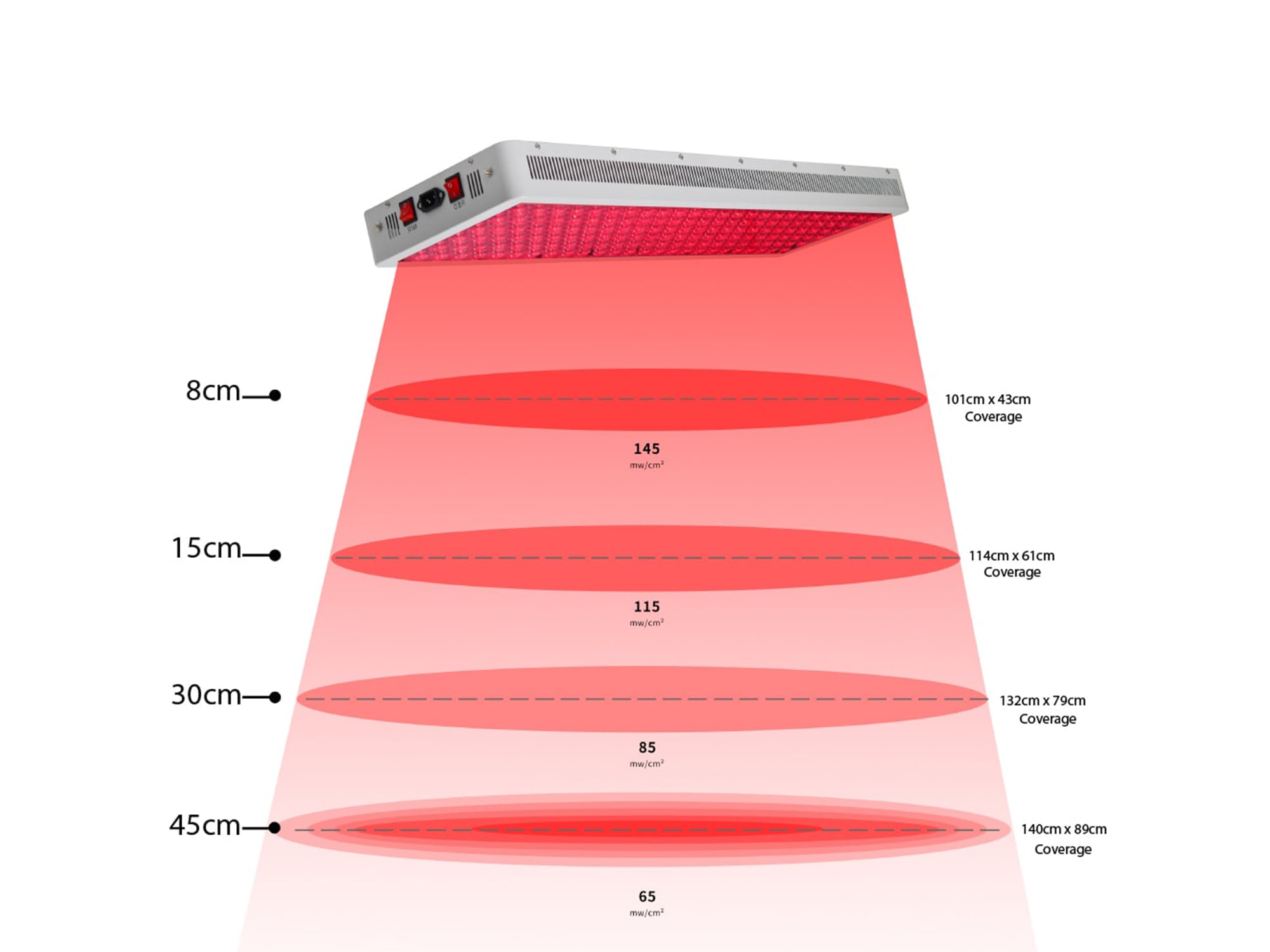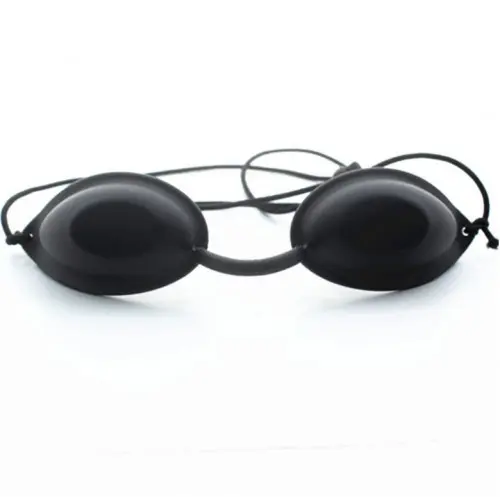While searching for your ideal red and infrared LED light panel, you may have come across an irradiance (IRD) graph. You may have found yourself wondering what an irradiance graph is, and why is it so important?
For those of you who haven’t seen one, an irradiance graph looks like this:

Let’s quickly discuss the numbers
So on the left of the above graph, we can see that there are distances marked out (8cm, 15cm, 30cm, 45cm). This is the distance from the machine that the other two readings relate to.

Focussing down to the 45cm distance, we can see that this TLA LTE 1500 covers 149cm x 89cm at an irradiance of 65mw/cm² .
The obvious observation we can take from this graph is that when you are 45cms away from a TLA LTE 1500w full body infrared light panel, approximately 149cm x 89cms of an area (or your body) will be irradiated or lit up by the lights.
The less obvious third reading, 65mw/cm² is the one we feel may be the most confusing for new users, so this is the reading we will be discussing in this blog!
Think of these numbers represented by __mw/cm² as power markers. As a general rule of thumb, you should never be closer than 100mw/cm² to a TLA infrared LED light panel.
Why?
To simplify this answer, let’s strip away the science and talk about the basics. The intended purpose of TLA products is to produce red and infrared light. Red and infrared light is commonly found in early morning and late afternoon sunlight, when the sky looks very yellow and red. Let’s say that the red and infrared light that reaches us here on earth, produces roughly 100mw/cm^2 of light when it hits our skin. It is likely to last 20minutes at a maximum (you may have noticed the pretty part of the sunrise and sunset are fairly short lived) and it is not likely to present itself more powerfully than this (in reality this is pretty close to accurate).
Thus, if you were using TLA machines to light an area with the most natural amount of light, you would use it at a distance that mimics this maximum of 100mw/cm² OR FURTHER. In the case of our example, the LTE 1500, that distance appears to be about 20-25cms away from the machine or further.
What happens if I go closer?
Not a whole lot. Basically, when you get closer to the light than the distance producing 100mw/cm², a few things happen, none of which are great.
Mainly, your body stops thinking it is bathing in a natural light, and starts reacting like it is near a very powerful light source. Our bodies reaction to being near a very powerful light source hasn’t been widely documented, however being too close to a red and infrared panel is in no way natural and probably has no benefit whatsoever. This makes sense logically as red and infrared light never presents so powerfully in nature to begin with.
Thus when the idea of our products is to produce a natural amount of red and infrared light, the best idea is to never be too close, and that is all there is to it!
As a note* Higher numbers do not necessarily make the machine better, they just mean you should be further away from them while in use so that they actually work. For a blog that talks about red light therapy panel power out vs results, click here!
Thanks as always for visiting therapylights.com.au, feel free to contact us with any further questions about your red & infrared LED light panel.
Jonathon
Founding Director








I have read your blog as I am thinking of buying an LED machine, and I am trying to learn about the technology. I have been having red light treatments for years, but just facial treatments. I am now requiring to use a full-body machine due to a medical condition which has really affected my skin.
There is a huge disparity in pricing. I have seen beds from $2000 to nearly $100000 and I I don’t think that the most expensive is always the best. I think some of them are agents for other companes, very few produuce them here.
I have a query about something you say in your blog, which is that it’s not good to get too close to the machines. I have been told exactly the opposite but only about red and white lights, I have never had IF , but the salon I use always place the light very close to your face.
You give an explanation for your thinking, but it seems strange there are two completely opposite views and I am intrigued by that. I am keen to find out more before I purchase a product.
Regards
Honestly, feel free to give us a call. We do not want to call your salon incorrect, however, rest assured with our products at least, we are absolutely experts.. :D